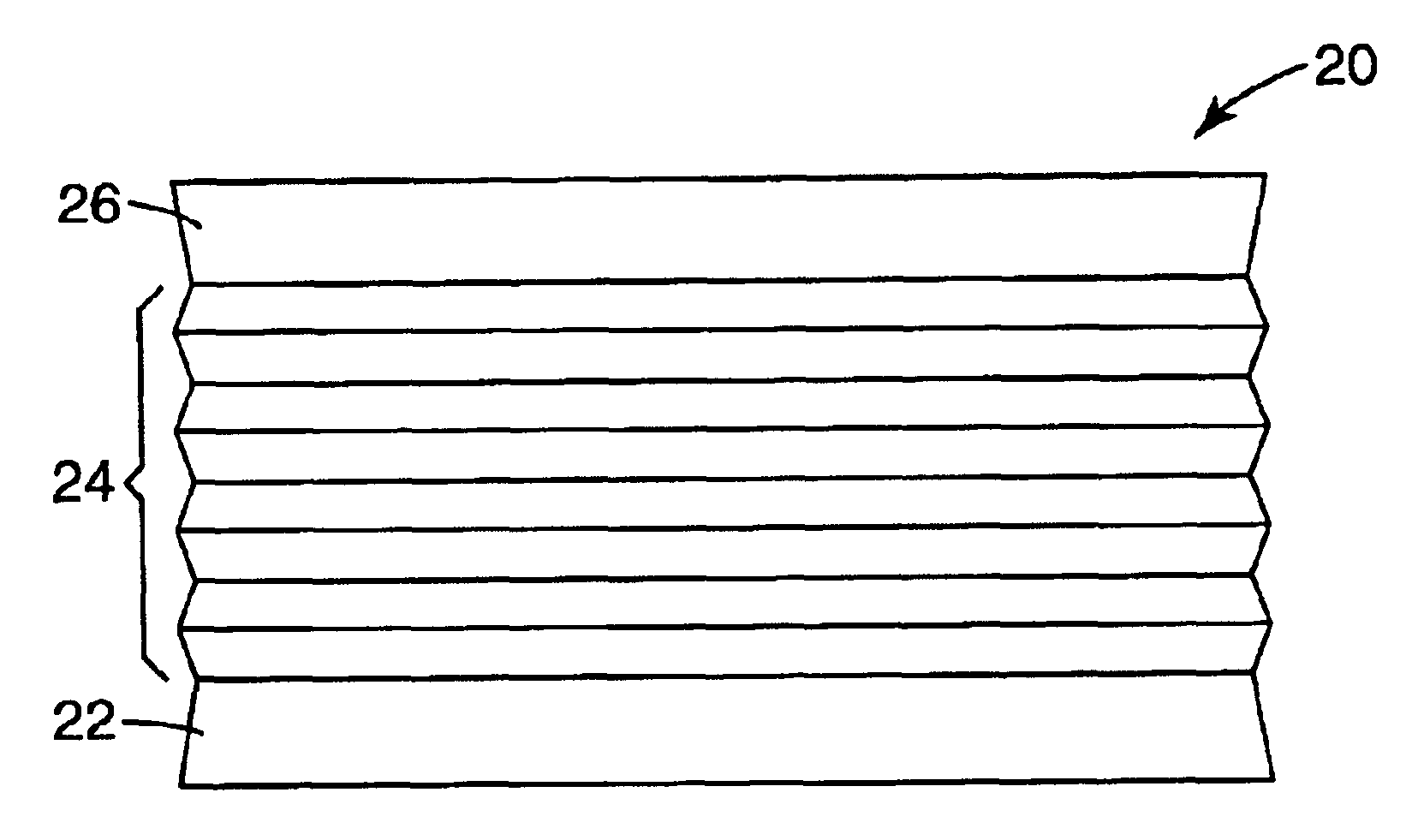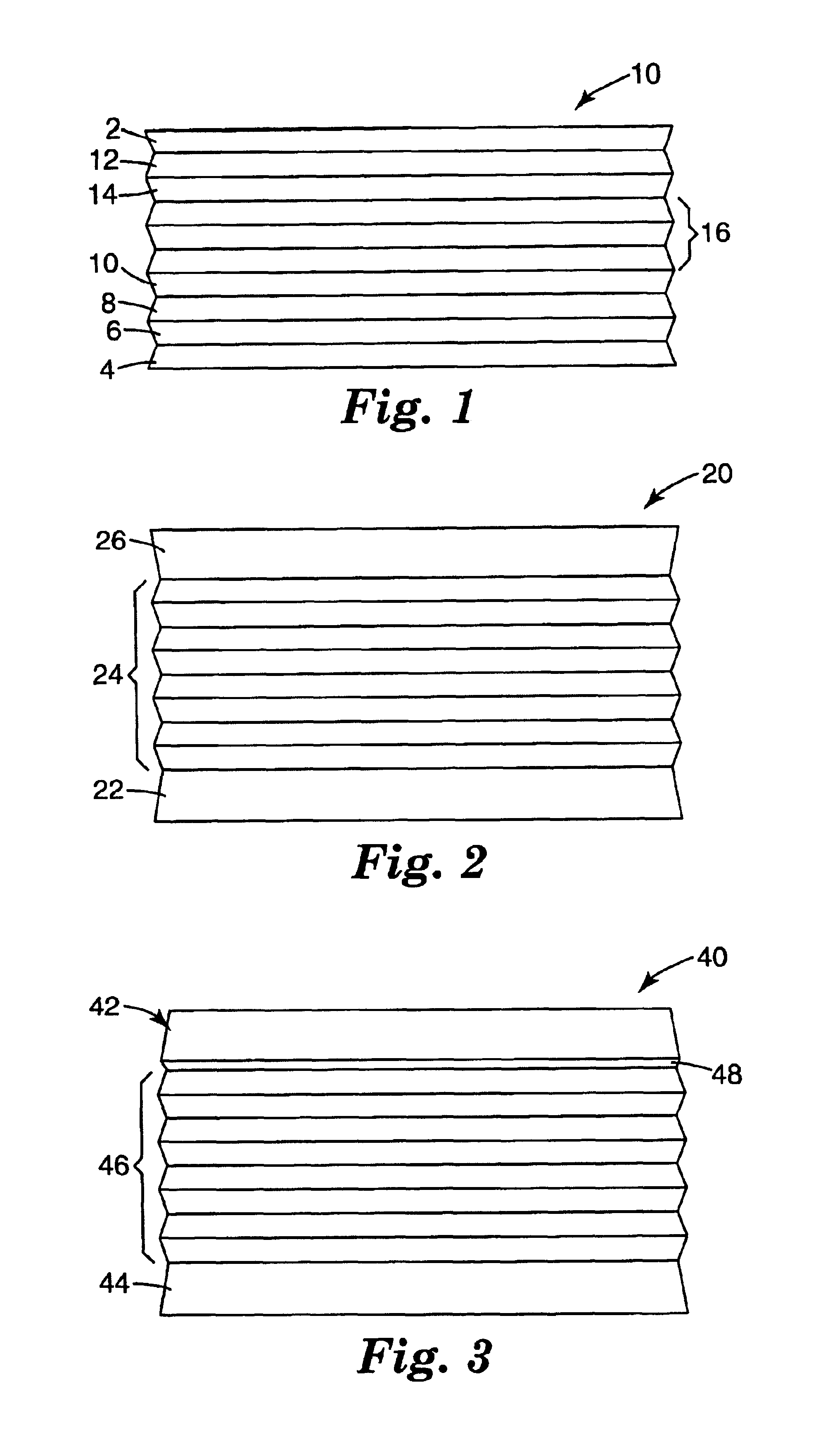Multilayer optical adhesives and articles
a technology of optical adhesives and articles, applied in the field of multi-layer optical adhesives and products, can solve the problems of increasing the reflection of optical products, and achieve the effects of reducing distortion, avoiding ghosting or haloing, and high transmittan
- Summary
- Abstract
- Description
- Claims
- Application Information
AI Technical Summary
Benefits of technology
Problems solved by technology
Method used
Image
Examples
example 1
A multilayer sample (Example 1) was prepared by laminating the highest refractive index adhesive sample (PSA-5) to PET film, removing the Release Liner and laminating the next highest refractive index adhesive on top and continuing consecutively until all 5 adhesives had been laminated. Percent transmission (% T) and percent reflectance (% R) were measured, as described above, in the wavelength ranges of 400-700 nm and 600-700 nm. Measurements were made with the light source incident on the adhesive side of the sample. Percent absorption (% A) was calculated as described above. The Luminous Transmission for the laminate was determined using the test method described above with 2 different light sources with the light incident on the adhesive side rather than the PET side. The data for the multilayer laminate (Example 1) as well as for the laminates LAM-1-LAM-5 are presented in Table 3. Specular Reflectance (% RS) was measured as described above by sand blasting and painting black th...
PUM
| Property | Measurement | Unit |
|---|---|---|
| Fraction | aaaaa | aaaaa |
| Fraction | aaaaa | aaaaa |
| Fraction | aaaaa | aaaaa |
Abstract
Description
Claims
Application Information
 Login to View More
Login to View More - R&D
- Intellectual Property
- Life Sciences
- Materials
- Tech Scout
- Unparalleled Data Quality
- Higher Quality Content
- 60% Fewer Hallucinations
Browse by: Latest US Patents, China's latest patents, Technical Efficacy Thesaurus, Application Domain, Technology Topic, Popular Technical Reports.
© 2025 PatSnap. All rights reserved.Legal|Privacy policy|Modern Slavery Act Transparency Statement|Sitemap|About US| Contact US: help@patsnap.com


